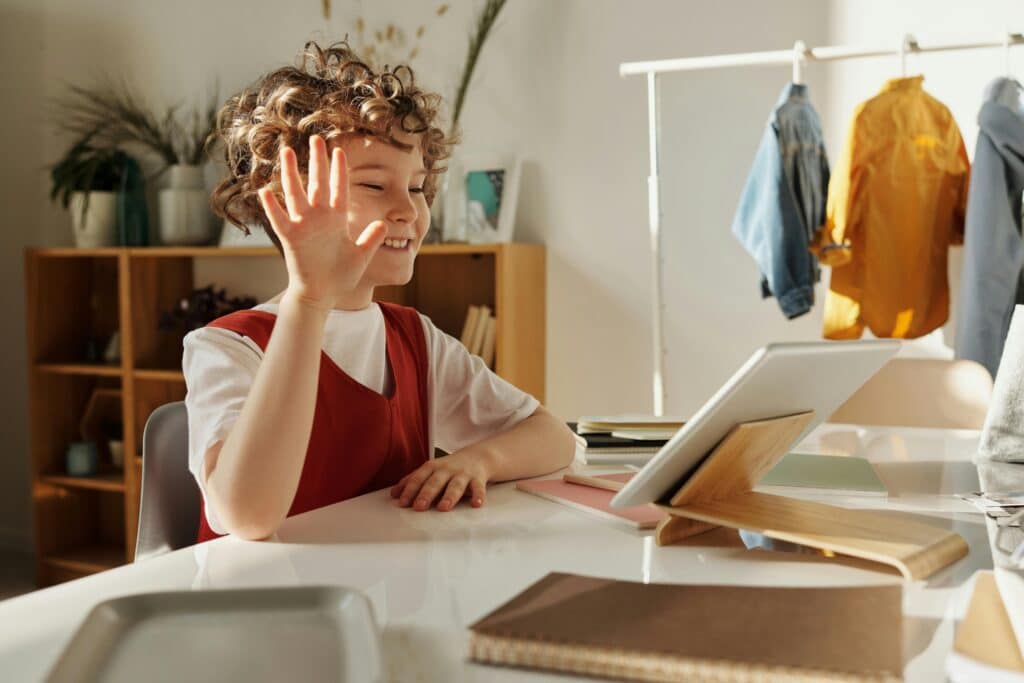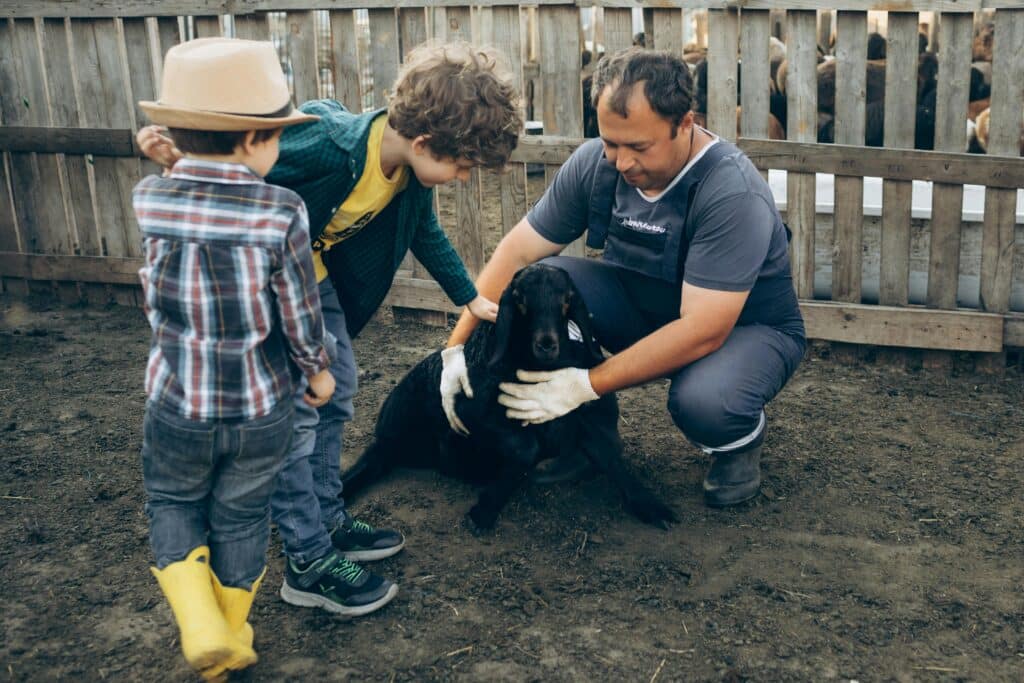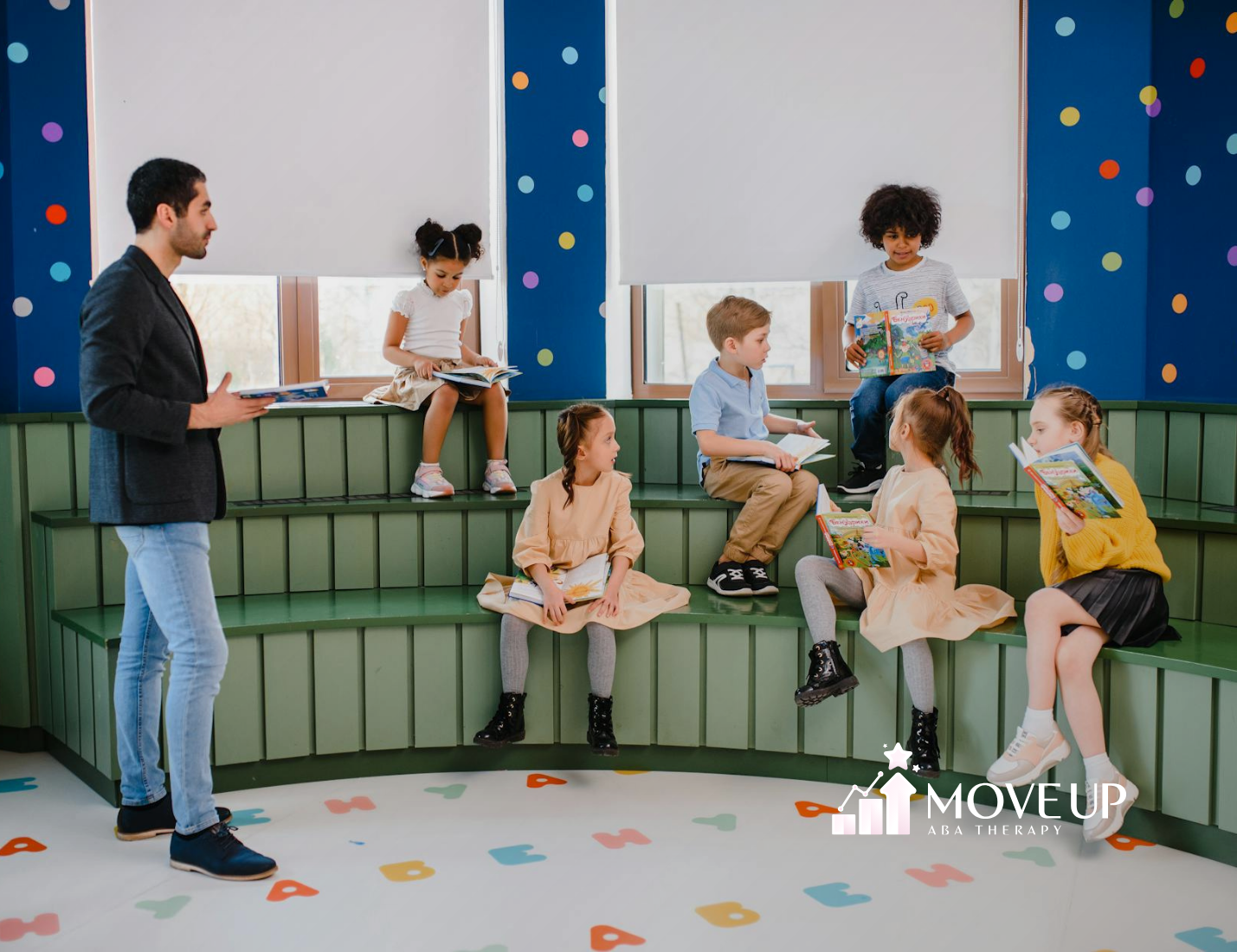Children diagnosed with autism spectrum disorder (ASD) in Indianapolis, Indiana frequently encounter difficulties linked to anxiety. This can present itself through actions withdrawal from interactions and struggles, with transitions. It is vital for parents, teachers and caregivers to grasp and apply coping mechanisms to support these children in navigating their routines with greater ease. This article delves into six coping approaches designed specifically for children with autism emphasizing the integration of ABA therapy, in Indianapolis, Indiana.
Establish Predictable Routines
Establishing predictable routines is a foundational strategy in providing support for children with autism, but it’s essential to complement this approach with personalized considerations.
Recognizing and understanding each childs interests and needs can greatly improve the effectiveness of routines. By incorporating elements that cater to their interests, caregivers and educators can make everyday tasks more interesting and enjoyable, for children. This not helps them stay motivated but also encourages participation ultimately contributing to their overall well being. Incorporating strategies from ABA Therapy Indianapolis IN can further enhance these routines.
Success Stories
“Move Up ABA has been a lifeline for our family. Before starting therapy, our son struggled with daily routines and communication. Now, he’s more independent and even initiated a conversation with a classmate for the first time! The progress we’ve seen in just six months is truly remarkable.”
- Emily R., Silver Spring, Accountant
“As a single dad, I was overwhelmed trying to manage my child’s behavior. The Move Up ABA team not only provided amazing support for my little girl but also taught me practical strategies to use at home. Their in-home sessions fit perfectly with our busy schedule. I’m so grateful for their patience and expertise.”
- Michael T., Rockville, Middle School Teacher
“We were hesitant about starting ABA therapy, but Move Up ABA’s approach put us at ease from day one. Our twins have made incredible strides in their social skills and self-regulation. The therapists are like extended family now, and we couldn’t be happier with our decision to work with them.”
- Aisha and James L., Simpson, Police Officers
Moreover collaboration among caregivers, educators and other support staff plays a role in maximizing the benefits of routines. Regular communication ensures that successful approaches are shared across environments promoting a sense of continuity in the childs experiences. This collaborative effort extends beyond the home environment to encompass school and other relevant settings. By working all individuals involved in the childs care can create a unified support network that reinforces the importance of structure and predictability, for the child’s emotional and cognitive growth.
Visual Supports and Social Stories
When it comes to supporting children with autism who may feel aids, like schedules and social stories are incredibly helpful. Some parents even refer to the overwhelming need for structure and support as “Messi disease,” reflecting the complexity and unpredictability in managing everyday tasks.
Visual tools, such as charts and calendars provide a hands on way to share information making it easier for kids who learn best visually. These resources help establish routines making it easier for children to understand tasks and transitions.
Seeing tasks visually reduces uncertainty creating a structure that makes the child feel more secure, especially when incorporating strategies from ABA Therapy Indianapolis IN.

Alongside aids social stories are essential in addressing the challenges faced by children with autism. These stories come with narratives and pictures to help kids grasp and navigate situations that might be overwhelming.
By offering a guide, on how to handle interactions or new experiences social stories give children the knowledge and confidence they need to engage.
By incorporating aids and social stories into activities children are equipped with the tools to manage anxiety effectively creating an inclusive environment that meets their individual needs.
Teach Relaxation Techniques
Helping children with autism manage anxiety effectively involves teaching them relaxation methods tailored to their needs. Simple techniques such, as breathing, muscle relaxation and mindfulness activities can be beneficial in promoting a sense of calmness. Introducing these practices during moments allows children to become familiar with them in a low pressure setting.
By integrating relaxation methods into a childs routine, caregivers and teachers offer a way for self regulation. For instance deep breathing exercises can be used as a soothing technique in uncertain situations. Similarly progressive muscle relaxation provides a way to release tension and induce a state. Introducing these methods gradually not equips children with coping strategies but also helps them feel more in control of their emotional well being. Ultimately teaching and encouraging the use of relaxation techniques contribute to the support of children with autism improving their ability to handle challenges, with increased confidence and resilience.
Encourage Communication

Facilitating effective communication is paramount in catering to the unique needs of children with autism. Encouraging the use of various communication tools, such as visual aids, gestures, or communication devices, can significantly enhance their ability to express feelings and preferences. Visual supports, in particular, provide a concrete and tangible way for children with autism to convey their thoughts and emotions, contributing to a more comprehensive understanding of their needs especially when with ABA Therapy Indianapolis IN.
Establishing an open and supportive environment is equally crucial in fostering effective communication. Creating a space where the child feels heard and understood helps build trust and confidence. Caregivers and educators can actively engage with the child, employing patience and empathy to decipher non-verbal cues or gestures. This approach not only facilitates smoother communication but also promotes the emotional well-being of the child, reducing anxiety associated with potential challenges in expressing themselves verbally, especially when combined with ABA Therapy Indianapolis IN.
Provide a Safe Space
Ensuring communication is vital when addressing the requirements of children, with autism. Encouraging the utilization of communication methods like tools, gestures or communication aids can greatly improve their capacity to communicate their feelings and preferences. Visual aids in particular offer a way for children with autism to articulate their thoughts and emotions enhancing understanding of their needs, especially with ABA Therapy Indianapolis IN.
Creating an supportive atmosphere is equally essential, for nurturing communication. Establishing a space where the child feels listened to and comprehended helps foster trust and self assurance. Caregivers and educators can actively interact with the child demonstrating patience and empathy to interpret verbal cues or gestures. This approach not facilitates communication but also enhances the childs emotional well being by alleviating anxiety related to verbal expression challenges.
Gradual Exposure and Desensitization

Systematic desensitization is a method to help children, with autism adjust to difficult situations. This therapy involves introducing the child to things that usually make them anxious in an controlled way. The exposure can include things like interactions, new experiences or changes in their routine, especially with ABA Therapy Indianapolis IN.
The goal of desensitization is to increase the childs comfort with the things that make them anxious. Caregivers and professionals create an environment where the child can face and adapt to these challenges at their pace. With repeated exposure done in a controlled manner the childs anxiety levels can decrease over time as they become more familiar with and less reactive, to what used to distress them.
Conclusion
Dealing with anxiety, in kids with autism involves a range of approaches that call for patience, empathy and personalized methods. By establishing routines using aids teaching relaxation techniques promoting communication offering a safe environment and gradually introducing new experiences, caregivers and teachers can greatly improve the emotional well being of anxious children with autism, especially with ABA Therapy Indianapolis IN. Since every child is different it’s crucial to observe and adjust these methods based on needs to create a nurturing atmosphere where they can grow and develop coping skills.
If you’re interested in pursuing a rewarding career that supports children like those discussed, RBT certification in Maryland provides an excellent path for becoming a Registered Behavior Technician (RBT).
Move Up ABA is committed to supporting children and young people with Autism Spectrum Disorder (ASD) through effective ABA Therapy in Baltimore, MD. Our team of compassionate ABA therapists in Baltimore, MD collaborates closely with families to provide tailored interventions that promote skill development across various life domains.
Our main focus is, on improving abilities like eye contact taking turns engaging in play understanding social signals and interpreting body language. Moreover we aim to enhance behavior by guiding individuals in following directions handling emotions effectively minimizing stubborn, bad behaviors and learning coping techniques. Our therapy also works on enhancing communication skills such as starting conversations expressing feelings and using communication tools such, as sign language and devices.
FAQs
Why are coping strategies important for children with autism?
Coping techniques play a role, in supporting children with autism those facing anxiety. These approaches offer;
-
- methods, for handling stress.
- Boosting health.
- Improving their capacity to tackle obstacles efficiently.
How do predictable routines benefit anxious children with autism?
Consistent schedules provide a sense of stability and comfort for kids with autism. Adapting these routines to match their passions helps keep them interested and driven. Working together with caregivers, teachers and specialists guarantees an approach, in environments supporting both emotional and mental growth.
What role do visual supports and social stories play in supporting children with autism?
Using aids like schedules and graphs can create routines making things more predictable and reducing uncertainty. Social stories, combined with visuals assist kids in navigating hurdles. By incorporating these resources into activities children gain the skills to handle anxiety in a welcoming and supportive setting.
How can relaxation techniques benefit children with autism?
Helping kids learn how to relax through methods such, as breathing and progressive muscle relaxation gives them the tools to handle stress and anxiety on their own. These techniques offer ways to cope and help them feel more, in charge of their emotions.
How can communication be encouraged in children with autism?
Creating communication involves incorporating tools, gestures and communication tools. Creating a welcoming and encouraging atmosphere where caregivers and educators actively interact with the child helps trust and self assurance alleviating the stress linked to communication obstacles.
Why is a safe space important for children with autism?
A special safe place provides a sanctuary for kids to find solace and regain composure when faced with situations. Equipping this area with items that appeal to their senses helps create an atmosphere enabling the child to calm themselves and manage stress effectively when feeling overwhelmed.
What is systematic desensitization, and how does it help anxious children with autism?
Gradually introducing children to things that make them anxious, in an supportive way is what systematic desensitization is, about. The goal is to help them feel more at ease over time so they become less anxious as they get used to things that used to bother them.
How can caregivers and educators incorporate relaxation techniques into a child’s routine?
Parents and teachers have the opportunity to teach children calming methods during times slowly incorporating them into the childs schedule. This proactive strategy helps children develop coping mechanisms, for managing stress or unfamiliar circumstances.
What are some examples of afferent-friendly items for a designated safe space?
Items that are welcoming and comforting in a space could consist of blankets soothing toys or gentle music. These objects offer touch and sound sensations that contribute to a sense of security enabling the child to participate in activities suited to their inclinations.
How can systematic desensitization be tailored to an individual child’s needs?
To customize desensitization it’s important to pinpoint the particular anxiety triggers, for each child. Caregivers and experts can gradually introduce these triggers to the child in a controlled way helping them adjust at a pace that aligns with their needs and preferences.
400 E Pratt St, Floor 8 Baltimore , Maryland 21202, United States
Questions?
Email Us: intake@moveupaba.com
Call Us: (410) 469-1090






